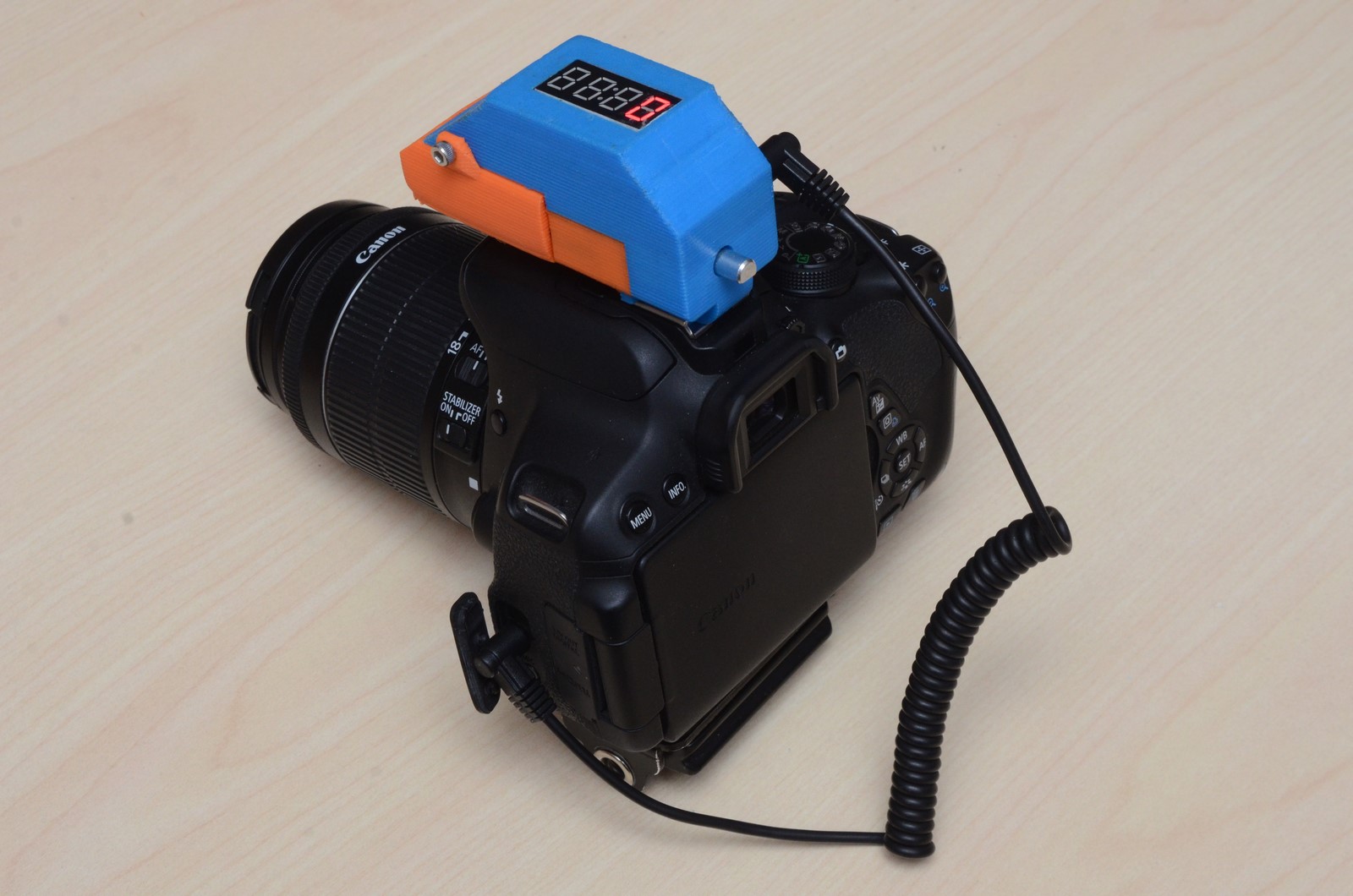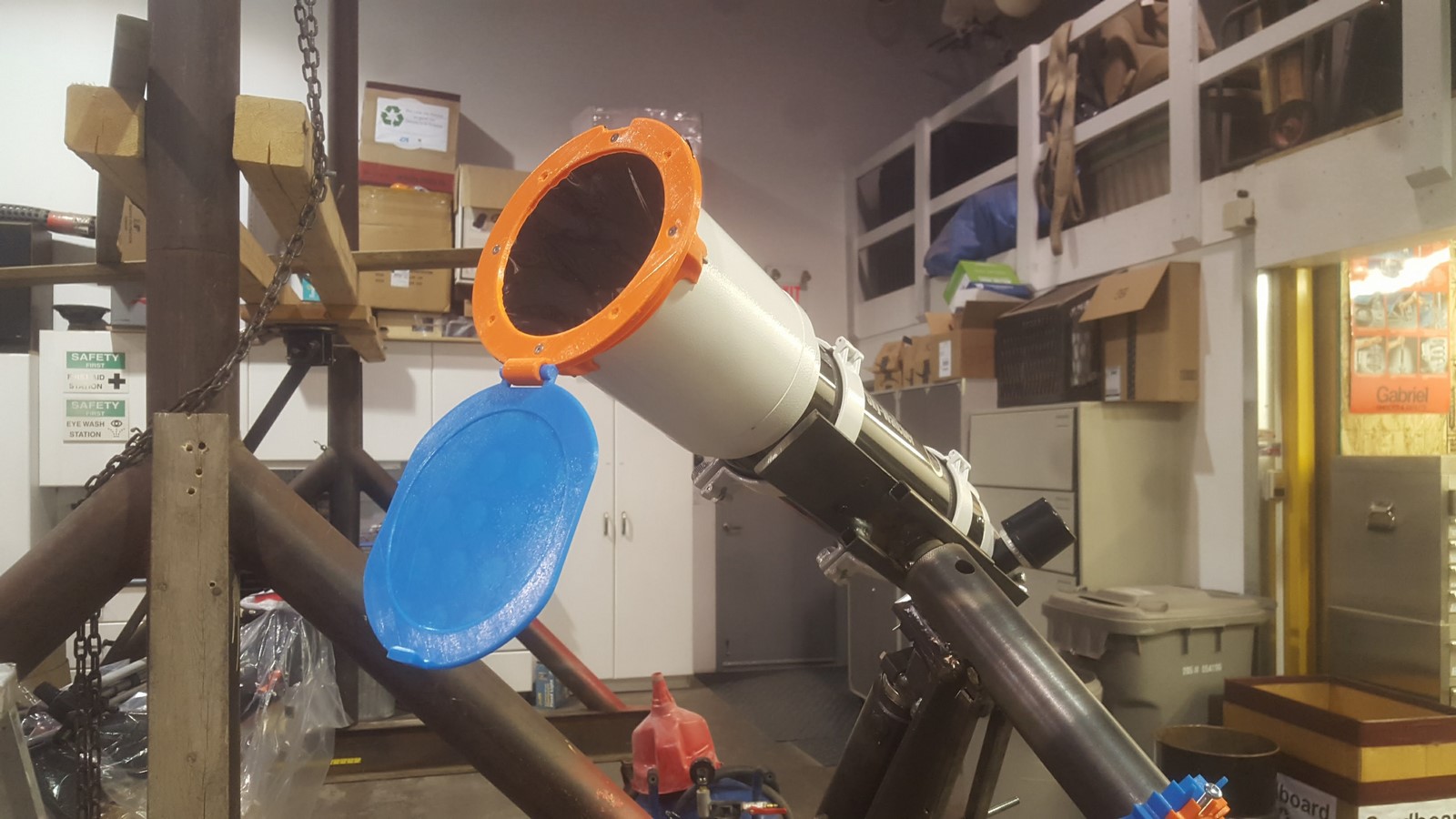PREAMBLE:
A friend and I set out to build a camera intervalometer for DSLR cameras. Instead of following one of the many build guides available online, we decided to design our own – The Mikro-Chronograph. Check out the feature list:
- 2x AA batteries with a ridiculously long battery life
- LED display functions in any temperature (eg. Canadian winter) and has fancy features such as scrolling text and swirling icon
- Tiny!
- Encoder/button combo input is very simple and intuitive
- Very fast to setup: Initial Delay, Shutter On Time, Shot-Shot Delay, and Number of Shots
- Automatically load the last settings each time the intervalometer is turned on (with EEPROM wear levelling algorithm, it will easily outlast a professional camera)
- Can be extensively customized without reprogramming, including screen orientation & brightness, input styles, clock speed calibration, and memory behaviour
- Safe to use with any DSLR, thanks to the optoisolator
- Price Tag: less than $20 CAD


If you want to build one, just get the components listed, wire them up on a PCB board (look at the photos below for a layout guide), program the ATTiny85 with the available code, and build a case. All of the details can be found on Google Drive. The 3D printed case designs are on Thingiverse.
















